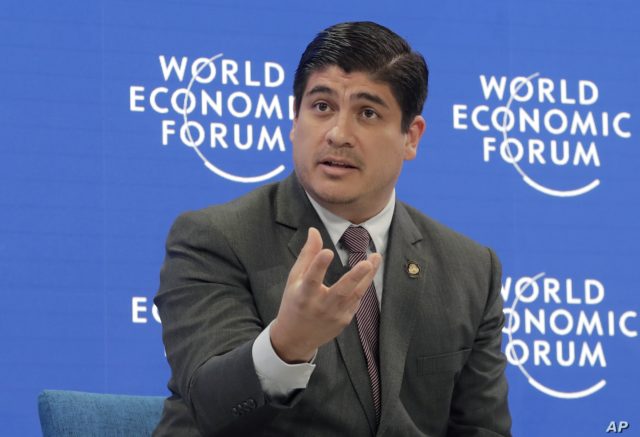For many years, and up to now, in different parts of the world, there has been the talk of climate change and all its negative consequences that affect the quality of life of people worldwide. Around this phenomenon, many governments have been interested in implementing tactics, plans and mechanisms that can slow down all that effect that threaten humanity and one of the ways is through decarbonization.
Costa Rica launched in February 2019, the “National Decarbonization Plan” that seeks to eliminate the use of fossil fuels by 2050 and promote the use of clean energy to combat climate change. This plan contemplates changes in mobility of both public and private transport, in the management of energy forms, in sustainable construction and industry, as well as waste management, it also includes guidelines to improve agricultural practices and land use, thus avoiding deforestation.

This plan is a project whose impact is also aimed at promoting the modernization of the Costa Rican economy, generating jobs and boosting its growth through a model based on the generation of decarbonized, digitalized and decentralized production of goods and services. All this translates into laying the foundations of a new economy, creating a positive, innovative and inspiring vision of the future.
Countries must adapt their economies to the great changes that are taking place in the world and these must be directed towards policies that promote the sustainable use of natural resources, thus sponsoring the so-called “green” economy.
Transitions to low-emission economies require profound transformations, with real commitments of all the actors that must intervene in these changes which Costa Rica can achieve, it has already made important advances, among them the country’s electrical grid stands out, with more than one 99% free of carbon emissions.
Costa Rica, with this decarbonization plan, seeks to achieve great changes and among its goals is to achieve a 70% zero-emission fleet of public buses and taxis by 2035 and an electric passenger train already in operation, all intend to have a completely clean public transport system that replaces private vehicles as the main mobility option.
Another objective proposed with this plan for the year 2035 is to ensure that 25% of the private vehicle fleet is electric and that by 2050 all private vehicle sales are zero emissions and 60% of the truck fleet be zero-emission. In the same way, by 2030, it is proposed that the electrical power grid operates 100% with renewable energies and that by 2050 electric energy be the primary source for transport, residential, commercial and the industrial sector.

The Decarbonization Plan is structured by 10 axioms that direct the paths of transformation in the key areas that lead to reversing the vertiginous growth of the planet’s greenhouse gas emissions, as well as promoting the modernization and revitalization of the economy under a vision of green growth. In summary, the 10 points established for decarbonization are:
- Development of a mobility system based on safe, efficient and renewable public transport and an active and shared mobility scheme.
- Transformation of the fleet of light vehicles to zero emissions, nourished by renewable energy, not of fossil origin.
- Promotion of a freight transport that adopts modalities, technologies and energy sources of zero-emissions or the lowest possible.
- Consolidation of the national electricity system with capacity, flexibility, intelligence necessary to supply and manage renewable energy at a competitive cost.
- Development of buildings of various uses (commercial, residential, institutional, under high-efficiency standards and low emission processes.
- Modernization of the industrial sector through the application of electrical, sustainable and efficient processes, as well as low and zero-emission technologies.
- Development of an integrated waste management system based on the collection, separation, reuse, and disposal with maximum efficiency and low emission of greenhouse gases.
- Promotion of a highly efficient agri-food system that generates local low-carbon consumption goods.
- Consolidation of an eco-competitive livestock model based on production efficiency and reduction of greenhouse gases.
- Consolidation of a management model for rural, urban and coastal territories that facilitates the protection of biodiversity, the increase, and maintenance of forest cover and ecosystem services based on nature conservation.
In addition, it is also composed of 8 axes of transversal strategies whose objective is to consolidate the process of transformational change, through the modernization of the institutional framework, the fiscal framework, the educational system under comprehensive approaches, with social, financial, environmental and technological considerations. These axes are:
- Strengthening the principles of inclusion, respect for rights and promotion of gender equality.
- Integral reform for the new institutional structure of the Bicentennial plan.
- Green tax reform-financing strategy and investment attraction for transformation.
- Knowledge-based economy digitalization strategy.
- Strategies of “fair transition”.
- Transparency, Metrics and Open Data Strategy-Education and culture strategy: Bicentennial Costa Rica free of fossil fuels.
The implementation of this plan frames great challenges that require transformational efforts in the development and implementation of one of the first global strategies for short and long term decarbonization. The transition to a low-emission economy is possible if all the parties involved understand and accept the great positive impact generated by the Decarbonization Plan for the future, in addition to creating a great opportunity to generate wealth, increasing employment opportunities. And improve the quality of life, so the great commitment is usually also a profitable proposal for the country.

